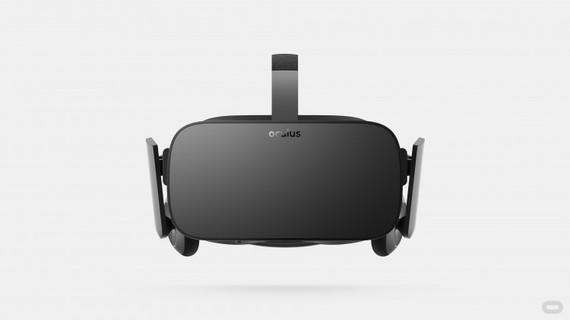Virtual reality is just about to hit the inflection point.
Soon, nearly everyone will have a VR device, or use one regularly. The well of content is rising, and the cost is dropping; only the execution of the various applications is limiting exponential growth. In almost every educational setting--whether it's teacher to student, coach to athlete, or doctor to patient-- the experience can be vastly improved by this new tool. Here are a few examples.
Through VR, patients can preoperatively experience the surgical center, the recovery process and their rehabilitation exercises. Not only can instruction on post-operative gait training and range of motion be given; the patient can actually do the exercises under the virtual guidance of the physical therapist. When combined with wireless activity trackers (e.g., Fitbits), evaluation of the patient's outcome--let's say, range of motion after a total knee replacement--can be actively demonstrated, scored and reported without the patient leaving home. Problems can then be red-flagged to the doctors' office, activating early interventions.
Truly valid outcome scores for surgeons and implants will then be possible. Patients will compare their post-procedural progress to their surgeon's previous patients, and even check their scores against a national database of patients who are in similar physical therapy recovery processes. All of this data will be measured and collected in virtual reality PT sessions, then uploaded or accessed on your smartphone--which will be connected to a VR headset.
Surgeon training films and videos have traditionally been visual; now they will become tactile. Feedback devices which increase and decrease resistance (depending on the density of the virtual tissue) will provide the "touch" training long missing in the teaching of new doctors (or in teaching old doctors new tricks). Not only can a potential surgeon's dexterity be trained and measured; the skills sets needed to respond to OR crises, such a sudden vessel rupture or heart attack, can be practiced in the virtual body as well [1]. The "See one, teach one, do one" of the old days becomes, "See a hundred, and practice until your scores match the top 10%--then do one on a live patient."
The benefits will stretch far beyond medicine. EMTs, emergency responders and firefighters will go in and out of every conceivable disaster scenario, following the training manuals and guidelines set down by their specialties, long before donning a uniform.
Sports will also become fertile ground for virtual reality training. Imagine if pro football prospects are given not just a 150-page playbook to memorize pre-season, but a VR headset in which he can practice his team's signature plays in real time. Then imagine each week's opponents added to the virtual game, with their likely formations and responses.
It makes Madden NFL Fantasy Football seem dated, and our fantasy future look fabulous. For more on medical innovations, visit us at Stone Clinic.
----------
1.Seymour, N. E., Gallagher, A. G., Roman, S. A., O'Brien, M. K., Bansal, V. K., Andersen, D. K., & Satava, R. M. (2002). Virtual reality training improves operating room performance: results of a randomized, double-blinded study. Annals of surgery, 236(4), 458.

